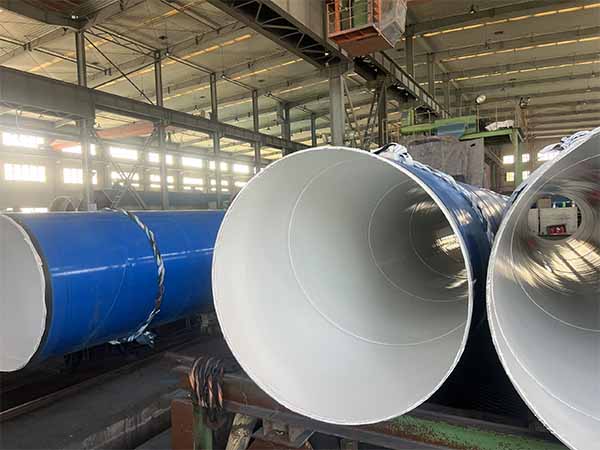Although both
ERW steel pipe and
spiral welded steel pipe are welded steel pipes, they differ significantly in performance, appearance, and uses due to differences in manufacturing processes, structural forms, and application fields. Understanding these differences is fundamental to making an informed choice. The following sections detail their differences:

1. Definition and Forming Method
ERW steel pipe is an resistance welded steel pipe. ERW stands for resistance welding, which uses the resistance heat generated by an electric current to melt the edges of a steel plate or coil. Pressure is then applied to weld the edges together, forming a strong longitudinal weld. Ordinary ERW steel pipe uses low-to-medium frequency current, while HFW steel pipe uses high-frequency current. High-frequency current welds the two sides of the steel coil together more quickly and evenly, making it suitable for high-pressure transportation and other applications.
Spiral welded pipe is made by rolling a steel coil into a spiral shape and then welding it along the spiral direction using submerged arc welding. The resulting weld is spiral-shaped. It is a large-diameter steel pipe mainly used in large-diameter, low-to-medium pressure applications.
2. Structural Characteristics and Precision
The different forming methods of the two types of steel pipes result in different structural characteristics and precision, specifically in the weld morphology and dimensional accuracy.
Weld Morphology: ERW steel pipes have longitudinal straight welds, achieved through resistance welding, resulting in near-zero weld reinforcement on the inner wall. The weld surface is smooth, and the anti-corrosion coating adheres strongly. Furthermore, with continuous technological advancements, the weld strength of ERW welded pipes is increasingly higher, allowing them to replace seamless steel pipes in certain situations.
The weld of spiral pipes is helical, requiring approximately 0.3mm of reinforcement after welding. The weld quality is poorer, prone to stress concentration points, and the coating adhesion is weaker, making it susceptible to peeling.
Dimensional Accuracy: ERW steel pipes have high geometric accuracy (diameter tolerance ≤0.12%, ovality <1%), while spiral pipes have poorer dimensional accuracy, with misalignment rates reaching 1.1–1.2mm (10% over the wall thickness), requiring frequent rounding adjustments during on-site construction.
3. Performance Comparison
Differences in forming processes result in significant performance differences between ERW steel pipes and spiral pipes.
ERW steel pipes have a high-pressure advantage, exhibiting excellent pressure resistance. Ordinary ERW steel pipes have a maximum working pressure ≤2MPa, suitable for low-pressure environments such as urban water supply (water pressure 0.4MPa-0.6MPa). HFW steel pipes, after post-weld annealing, achieve a weld tensile strength ≥480MPa, with a maximum working pressure ≤10MPa.
Spiral pipes, due to uneven stress distribution in the weld, have poorer pressure resistance, with a maximum working pressure ≤4MPa, suitable only for medium-pressure scenarios such as urban heating pipelines (working pressure 1.2MPa-2MPa).
4. Application Areas
ERW steel pipes can be used in both low-pressure and high-pressure industrial applications.
Low-pressure applications: Can be used as construction scaffolding, and also for urban gas and water pipelines.
High-pressure applications: Can transport oil, natural gas, high-pressure steam, etc.
Spiral pipes are only suitable for large-diameter, low-to-medium pressure applications, such as urban water supply and drainage pipelines, and low-to-medium pressure, long-distance oil and natural gas transportation.
In summary, ERW steel pipes dominate the small-to-medium diameter pipe market due to their high efficiency, high precision, low residual stress, and automation advantages, while spiral pipes are irreplaceable in large-diameter applications due to their economic advantages.
